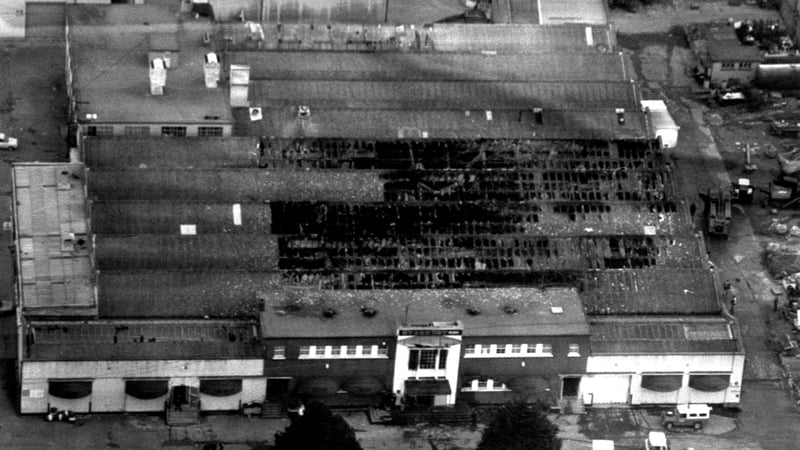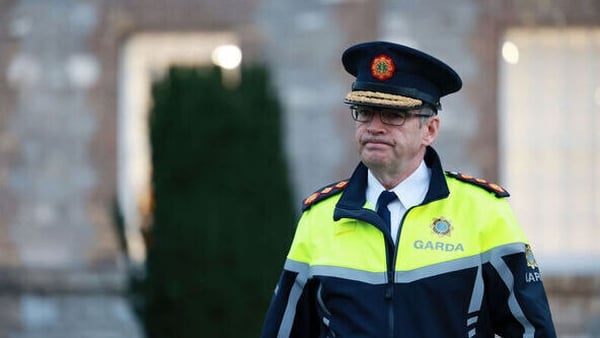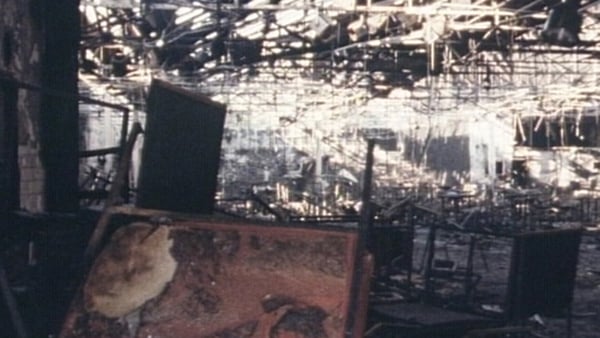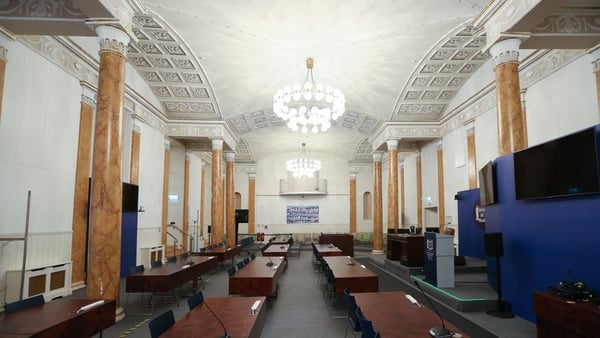For many of the families of victims and survivors of the Stardust fire, the stigma of the controversial finding of the 1982 Keane Tribunal that the fire was "probably caused deliberately" lingered.
That finding was removed from the record in 2009 and the Stardust inquests heard how there was absolutely no evidence of arson.
Today, it has been replaced with a finding that it started in the hot press caused by an electrical fault. That finding of the source of the fire was met with muted cheers, from the public and from the legal teams representing the families of the victims.
Previously, in his summing up, counsel Seán Guerin, representing families of the victims, said that has to be the "beginning and the end of it" as far as arson is concerned and said to say otherwise is "no more than speculation, not inquiry, which is incapable of doing justice" to the victims and their families.
The jury heard extensive evidence from fire expert Dr Will Hutchinson, from the firm Jensen Hughes, who had been retained by the coroner to give his opinion on the cause and origin of the fire.
At the start of his testimony, he said he was unable to determine with any certainty the exact location of where the fire started, but said it was "possible" and the most likely scenario that it originated in the hot press in the main bar or started in the partitioned-off seated area known as the west alcove - where the fire was first seen by those inside.
He put the level of certainty as "probable" that it was caused by an electrical fault in the hot press, and said it was "probable" too that it was started deliberately in the west alcove.
During sustained questioning from Mr Guerin, Dr Hutchinson agreed that there was absolutely no evidence that anyone deliberately set a fire in the west alcove and that no accelerant was found.
Dr Hutchinson told the court that he was suggesting that the fire started in the hot press, and spread into the ceiling void where it then transitioned over to the west alcove where it was first observed by patrons inside the club.
He agreed there was a "detailed evidential basis" for this, which also explained how locals outside had seen flames coming through the roof before it was noticed by patrons inside.
He agreed too, that it would have been "relatively easy" for the seats in the west alcove to be ignited from dripping "molten burning plastics".
He also said that in the early stages, a fire in the hot press, which was located in the corner of the main bar beside the west alcove, could have developed without it being noticed.
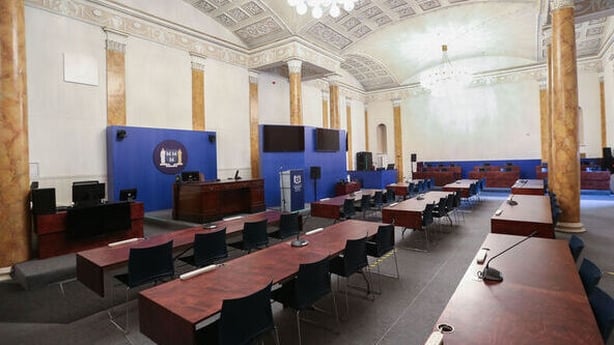
The court also heard that the damage done to the hot press and its cabinet was "disproportionate" when compared to the other parts of the main bar where the press was located.
The jury was told too that an examination of the press afterwards found a number of electrical issues with the unit including a "presence of bad corrosion", "bad wiring" and that there had been a cap removed sometime before the fire which would affect the operation of the thermostat.
The exit doors
The condition of the emergency doors loomed large over the inquests.
The question of whether they were unlocked, locked, chained, or obstructed has been an integral part of the Stardust story.
They are questions, that have persisted, first asked as the building was still smouldering.
What is known is that on the night, the emergency doors did not work as fire exits are designed to.
The inquests heard that there was a policy that the doors would be locked with a chain and padlock up until around midnight on disco nights and that there was a practice too, of wrapping the chains around the bar in such a way that it would appear they were locked, this was referred to "mock-locking". All of this happened as people were inside.
Including the main entrance, there were six exits from the Stardust.
The legal teams argued that Exit 3 was padlocked when the fire broke out and took considerable effort by those desperate to escape to force it open.
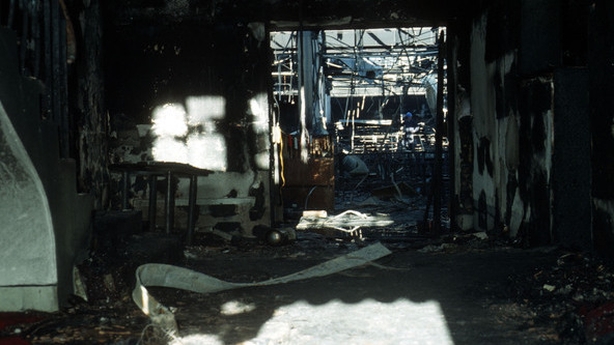
There were several accounts recalling the panic and the time that was spent forcing open the doors before they gave way.
The court heard how there were similar delays at Exits 4 and 5.
Witnesses recalled seeing chains on the bars and a build-up of people that gathered around, trying to get them open.
They did so but only after some time. As the families' legal teams reminded the jury, this was happening as the fire and the smoke spread, in circumstances where time was of the essence.
As if to illustrate that point, the jury was told that the bodies of 24 victims were found in an area near Exits 3, 4 and 5.
Lawyer Des Fahy, acting for families of the dead, said he was suggesting "very clearly" that those people died because the exits were locked when the fire broke out, and that "they couldn’t escape".
He had argued too that whether the doors were locked with a chain, or "mock-locked", the result was the same, it delayed people’s time in escaping.
"Delay causes death," the inquests were told.
The court heard expert evidence that after 90 seconds spent in such a toxic environment, as thick black smoke and noxious gases enveloped the place, the situation would have been immediately hazardous to life.
Exit 2 was the main entrance, it was through these doors that the patrons entered the club and also the way that the majority either got out or attempted to get out.
There were huge problems at this exit too. Witnesses said that the door closed back over for a time.
The result was a logjam of people trapped in the foyer, unable to move forward, unable to move back, they were being crushed.
The accounts from those stuck were frightening. They spoke of the darkness, the screaming, the pile up, the thick black smoke as they struggled to breathe before the doors flung open.
It was a different story at emergency Exits 1 and 6 and people escaped out of these relatively unhindered.
However, lawyers for the families said many more should have got out those exits but did not, primarily for two reasons.
The first, because they did not know the exits were there and secondly, the staff who did know about them, did not guide anyone out.
The court also heard that the reason for the locking and "mock-locking" was that management was concerned about the number of people getting in for free, by passing the main entrance and sneaking in the fire doors.
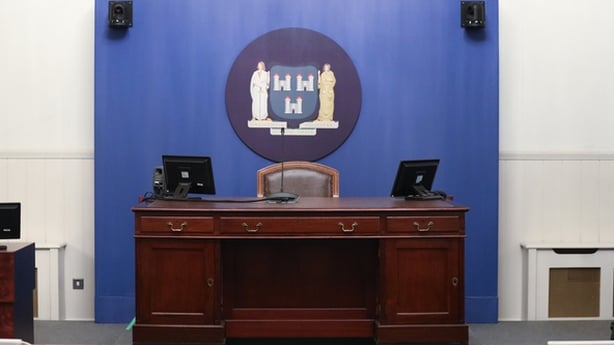
Lawyers for the relatives, however, continually, raised question marks about how serious and prevalent this "problem" actually was.
While they acknowledged it was an issue, they maintained it was not as significant as made out by the Stardust management and the doormen.
They put forward a different argument. Des Fahy told the inquests that a "scam" was going on among doormen who were charging people a reduced entry fee people to be let in the Stardust via the adjoining Lantern Rooms, without paying at the front cash desk.
Mr Fahy said it had been part of the story of the Stardust that the reason doors were being locked on disco nights up until 12.30am was to prevent paying patrons letting their friends in through the fire exits.
He said this was a "false justification" for locking the doors. Mr Fahy suggested that the real reason the policy of locking the doors was brought in to stop doormen who "were on the take".
In her closing submissions, Brenda Campbell KC, representing families of the victims told the jury that complaints had been raised by Dublin Corporation inspectors and members of the public about locked or obstructed doors for two years before the fire but that no enforcement action was taken.
She said the "closest we get to an enforcement action" was a letter sent by the corporation to the Stardust two weeks before the fire.
Replying at the time, manager Eamon Butterly said he gave "assurances" that the exits would be kept clear.
She asked: "What value…were Mr Butterly’s assurances after that very sorry history."
Martin Davidson, a fire engineer with nearly 30 years’ experience, gave a presentation to the jury which lasted over a two-day period.
His testimony was direct and often damning, telling the jury that the locking or obstructing of exits contributed to delays in people getting out of the burning building and to the loss of life.
He told the court that of 26 byelaws that were relevant to the building and running of the Stardust premises, 16 were found to have not been complied with.
At the conclusion of his evidence, the jury, in a written question through the coroner, asked why the venue was allowed to open in the first place.
The carpet tiles
The use of carpet tiles on the wall is another defining feature of the Stardust disaster.
A theme repeated at these hearings was the part they played in the blaze with experts agreeing that the tiles were the primary cause of the rapid spread of the fire.
The inquests heard how the English company who manufactured the tiles did not recommend they be used on walls and were at the time being sold off at a cheaper price as they were being discontinued.
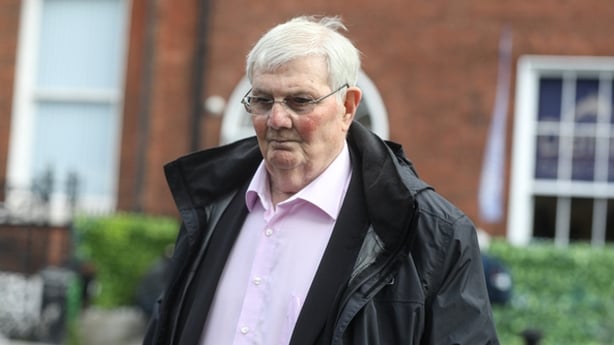
In his evidence, Eamon Butterly said the price of the carpet tiles was not his first thought when he purchased them, rather it was to get the walls looking well.
How they came to be there and how they were allowed to stay there was examined in detail.
The court also heard that an inspector from Dublin Corporation did notice the walls were covered with "something other than plaster" during a visit before the premises opened to the public and identified it as a "significant departure" from what was expected.
The jury was told the drawing submitted as part of the bye-law application showed plastered walls, not carpeted walls.
Brenda Campbell, KC, representing families of the victims told the inquest that the inspector did not tell anyone about it because he felt "it wasn’t a bye-law issue rather a fire department issue".
She also said the inspector at the time knew the fire department had ceased carrying out inspections and said it was a "missed opportunity".
When questioned about the tiles, Eamon Butterly said that if the corporation had said the tiles would have to be taken down, "you’d take them down".
Eamon Butterly
The inquests were significant too because it heard direct evidence from the man whose name has been synonymous with the Stardust, Eamon Butterly. The Butterlys owned and ran the premises.
Eamon Butterly gave evidence for 30 hours over an eight-day period last September.
In the days before his arrival, there was a sense of anticipation.
Relatives of the dead had written their names on sheets of paper and left them on the seats in the public gallery.
They were reserving their places, they did not want to miss out on hearing from the man who had remained silent, in public at least, on the events of 43 years ago.
It was just after 10.30am on Thursday 21 September when Eamon Butterly arrived, accompanied by his solicitor.
He was dressed in a black suit and a white shirt. To get on to the grounds, he walked past a group of family members of the victims who were standing outside the gates. No words were exchanged.
Eamon Butterly, now in his late 70s, was 36 years old in 1981.
On numerous occasions in the witness box, he said that it was his father, Patrick, who was "the boss". He described himself as the "manager of managers".
In the box, he acknowledged that his evidence on the locking of exits doors up until around midnight while patrons were still inside was "contradictory", after it was pointed out that he told the Keane tribunal that the decision to implement the policy was his own, but telling these inquests it came from the head doorman, his uncle, Tom Kennan.
On numerous occasions, Mr Butterly repeated that he was told by Tom Kennan at around 11.30pm on the night in question that all the exits were opened in the club and told the court too that he still believes the doors were unlocked.

To counter that suggestion, counsel for the families read aloud numerous accounts of people who struggled with great difficulties to get out the doors. Eamon Butterly said those accounts were shocking.
During closing submissions, Michael O’Higgins said when it came to Eamon Buttery’s evidence on the matter, his credibility was "shredded beyond redemption".
On the seventh day of evidence, Eamon Butterly, said it was "wrong" to lock fire exits while patrons were inside and agreed the locking was in breach of regulations and a serious fire hazard.
It was put to him by Brenda Campbell, KC, that were nine or ten occasions that Mr Butterly and the club had been told to keep the exits in good working order.
She put it to him: "You were told repeatedly that the exits were to be unobstructed."
"Yes", replied Mr Butterly.
Ms Campbell then said: "You were told repeatedly that locks and chains were not to be on the doors while people were inside."
"Yes," replied Mr Butterly.
"But you did it anyway," said Ms Campbell, and asked was it because of greed or arrogance.
Mr Butterly replied it was neither before saying "it was wrong".
On his final day in the witness box, he agreed that the management at the club "was not fit for purpose".
At one point during his direct evidence, speaking about the venue, Eamon Butterly said: "We thought it was one of the safest places around."
He was asked too, if there was anything he would have done differently.
He replied that he would never have got involved in converting the premises into a nightclub.
He said: "I would have knocked it down and built a new one and…do something different with it."
"That’s the one thing you’d do differently?" Michael O’Higgins asked. "I would, yeah," replied Mr Butterly.
The first responders
It was apparent too from the inquests that the Stardust left its mark on the emergency responders who attended the scene.
The court heard how by the time the first fire tender got to the scene, the blaze was either at or past it peak.
Such was the rapidity of the spread, the damage had been done.
There was evidence that nothing they could have done could have prevented any of the deaths.

The first responders had difficult jobs to do, they had to fight the fire, rescue who they could, ferry the injured to hospital and then recover the bodies of those who did not make it out.
Garda Matthew Quinn, who was 33 years old at the time, described putting one injured person into the front seat of his car and two into the back to get them to hospital.
"I went to put a third person in (the back) but because they couldn't touch one another, they were screeching, I had to get that person to leave."
He also described their injuries and said: "The blisters that were on their arms were massive."
"Some of them had burst and the skin…had fallen down over their fingers…like you’d peel a banana. It was terrible," he told the court.
There were tales too of rescues and the lives saved. Firefighter Noel Hosback described how he climbed through a window and kicked in the door of the ladies’ toilets searching for those trapped.
He discovered three people.
"They were very scared," he said and were "kneeling on the floor".
Along with others, he led them to safety.
One of them he saved was Deirdre Dames who was present in court while Noel Hosback was giving evidence.
Afterwards, in the lobby outside, the pair hugged.
The firemen also spoke about the "gruesome work" of the recovery operation as the ballroom still smouldered.
James Tormey described finding the remains of one of the victims inside the doors of an emergency exit "just two or three steps from safety".
Mr Tormey recalled how he found two bodies on the steps of a seating area and that it seemed like they had their "young arms around each other" and said their bodies "were fused as one".
"I thought at the time, that those people were trying to comfort each other before their demise," he said.
One of the most moving moments of the inquests came as fireman Noel Keegan sat in the witness box.
In his pocket was a handwritten note he had prepared. He wanted it read into the record but said he would get upset if he read it aloud.
In the end, he gave the note to the media. This is what it said: "I would like to put on record if I may and to bring to the attention of the jury.
"The Stardust fire took the lives of 48 young people but it left many more damaged with both and unseen injuries. These too are victims of the Stardust.
"The families of those who survived are also victims of the Stardust.
"But just to keep in mind that the emergency personnel who attended on the night are also victims of the Stardust.
"From a personal point of view, I often wondered what type of person I would have been had I not experienced that night.
"What kind of husband, father, son, brother and friend I might have been.
"Make no mistake and remember always the Stardust changed every person it touched."
